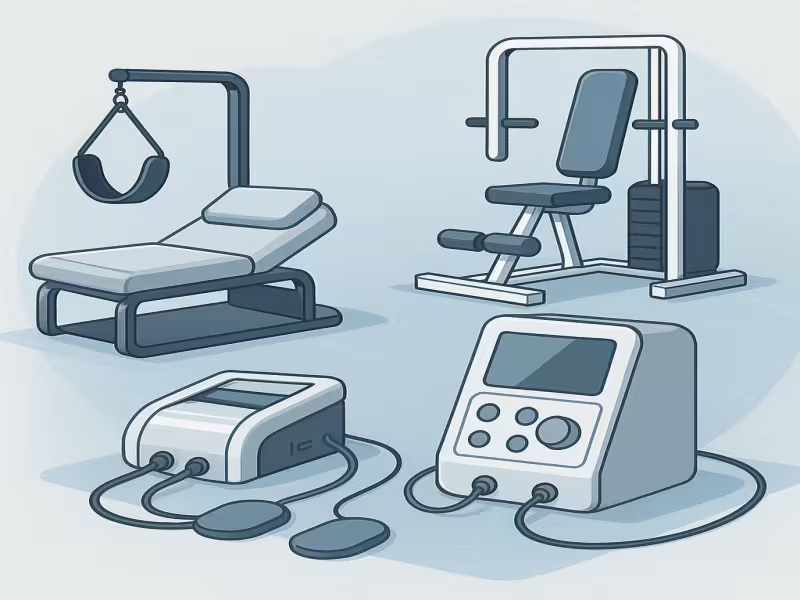
SHERIDAN, WYOMING - November 19, 2025 - A new generation of advanced physical-therapy systems from Nihon Iryo is entering the European assistive-care market, offering hospitals, rehabilitation centers, and outpatient clinics a more controlled, data-driven approach to therapeutic exercise. The company's latest electro-therapy, traction, and rehabilitation machines integrate modular safety systems, ergonomic patient interfaces, and streamlined operator workflows designed to raise treatment quality while improving throughput in busy physiotherapy environments.
Compact, automated technologies like these are increasingly essential as Europe faces rising rehabilitation demand, staffing shortages, and stricter expectations around device traceability and patient-handling safety.
Advanced Physical-Therapy Systems Designed for Precision and Consistency
Nihon Iryo's newest rehabilitation portfolio includes multi-mode electro-stimulation units, digitally controlled traction systems, and exercise-support platforms that combine adjustable mechanical motion with controlled load application. Each device is engineered to minimize operator burden while standardizing therapeutic output.
Key technical features include:
- Real-time treatment timing and automated stop controls
- Modular therapy modes (electrotherapy, traction, muscle stimulation)
- Adjustable patient supports for posture stability
- Fail-safe shutdown systems for risk-free operation
- Quick presets for repeatable therapeutic protocols
This engineering approach enables therapists to replicate therapy conditions with high accuracy-critical for musculoskeletal rehabilitation programs requiring consistent mechanical load and precise stimulation patterns.
Workflow Benefits for High-Volume Rehabilitation Settings
Operational efficiency remains a central challenge for physiotherapy and rehabilitation departments. The new systems aim to reduce unnecessary steps during setup, positioning, and treatment execution.
Workflow advantages include:
- Faster patient turnover via simplified straps, supports, and adjustment levers
- Reduced manual handling, supporting safer staff operations
- Digital treatment logs, aiding documentation and compliance
- Minimal maintenance interfaces, shortening downtime
For centers operating under strict reimbursement and time-per-session constraints, these workflow gains can translate directly into higher treatment capacity and improved care delivery.
Market Trends: Europe's Rehabilitation Sector Pushes Toward Digital-Mechanical Hybrid Solutions
Across Europe, demographic change and chronic-pain prevalence are driving a surge in physiotherapy utilization. At the same time, labor shortages are pushing clinics toward solutions that offer:
- Smart automation
- Reduced manual force requirements
- Increased safety for both patients and clinicians
- Consistent therapy regardless of operator skill level
Nihon Iryo's portfolio aligns with this shift toward semi-automated rehabilitation technologies-an evolution that mirrors broader trends in care robotics, assistive mobility devices, and digitally guided therapy platforms.
With health systems increasingly benchmarking equipment ROI, these hybrid mechanical-digital devices allow providers to deliver standardized, high-quality sessions with fewer operational variables.
Strategic Implications for Clinics, Hospitals, and Rehabilitation Centers
For European rehab facilities evaluating equipment upgrades, three strategic considerations stand out:
- Safety Compliance: Built-in protective systems reduce clinical risk and support adherence to EU medical-device performance standards.
- Operational Efficiency: Automation helps reduce therapist fatigue and time spent on manual adjustments, enabling more sessions per clinician.
- Patient Outcomes: Consistent force application, posture control, and repeatable stimulus parameters contribute to higher-quality rehabilitation cycles.
These factors are increasingly central to equipment purchasing decisions across the Care & Assistive Solutions market, where efficiency, reliability, and patient experience strongly influence long-term adoption.
Learn More
Additional technical documentation and product overviews are available at https://www.nihoniyo.co.jp/.